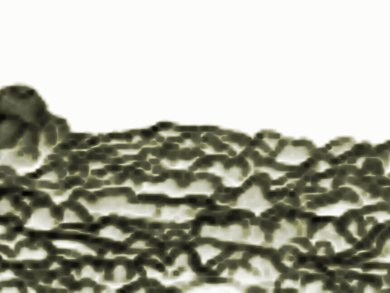Biofilms are communities of microorganisms attached to a surface, and their formation contributes to antibiotic resistance. They also allow bacteria to evade clinical detection, making their treatment difficult. The development of rapid and reliable methods for biofilm characterization might help doctors choose the correct strategy for treating an infection.
Young-Tae Chang, National University of Singapore, and colleagues screened a library of compounds and identified one that exhibits red fluorescence in the presence of a biofilm of Pseudomonas aeruginosa, a bacterium that opportunistically infects weak, often hospitalized, patients. This compound, CDy11, was selected on the basis of its fluorescence response to amyloid proteins that are important components of such biofilms. This molecular target was confirmed in biophysical and cell culture experiments
Furthermore, the researchers demonstrated imaging of a P. aeruginosa biofilm in the eyes of infected mice by simple administration of a solution of CDy11. They also showed how CDy11 could be used to reveal biofilms on surgical implants. They suggest that compounds developed from CDy11 with similar modes of action might one day be used for noninvasive imaging of difficult-to-treat infections deep within a patient’s body.
- Detection of Pathogenic Biofilms with Bacterial Amyloid Targeting Fluorescent Probe, CDy11,
J.-Y. Kim, S. Sahu, Y.-H. Yau, X. Wang, S. G. Shochat P. H. Nielsen, M. S. Dueholm, D. E. Otzen, J. Lee, M. M. S. Delos Santos, J. K. H. Yam, N.-Y. Kang, S.-J. Park, H. Kwon, T. W. Seviour, L. Yang, M. Givskov, Y.-T. Chang,
J. Am. Chem. Soc. 2015.
DOI: 10.1021/jacs.5b11357




